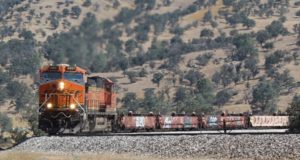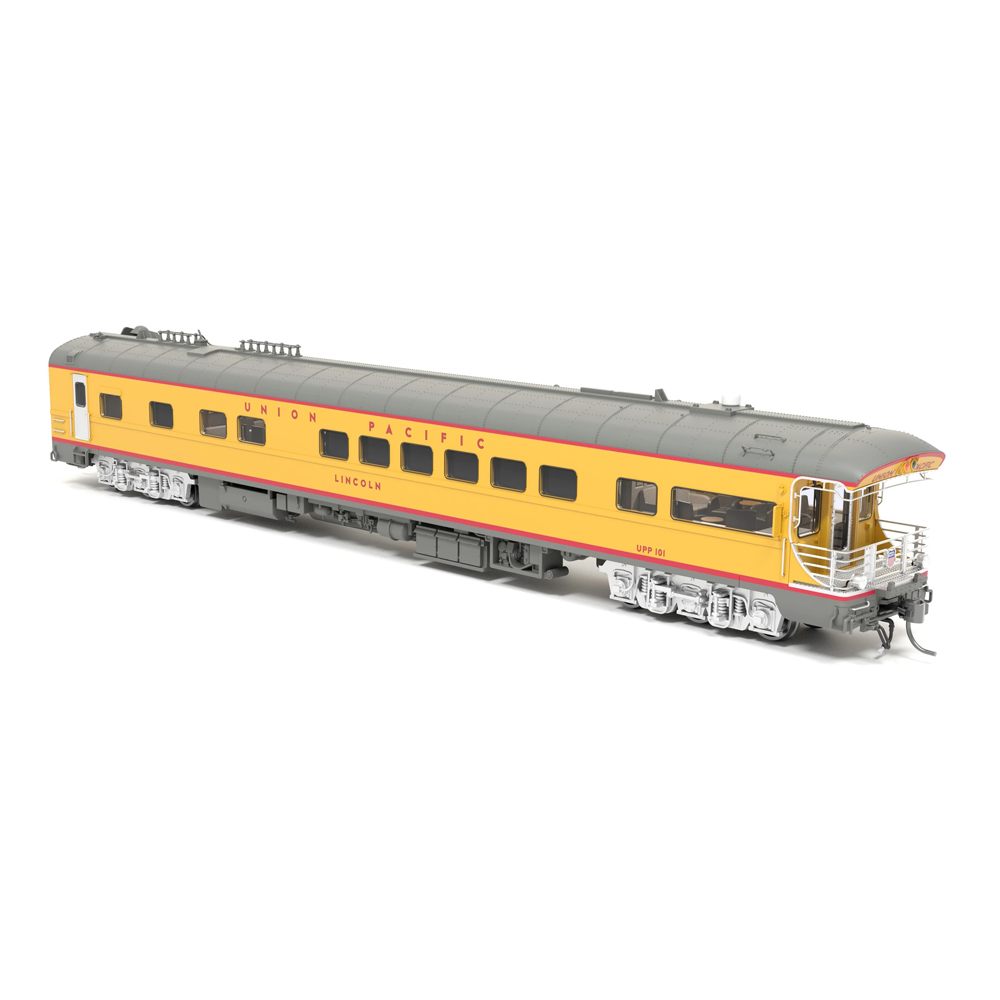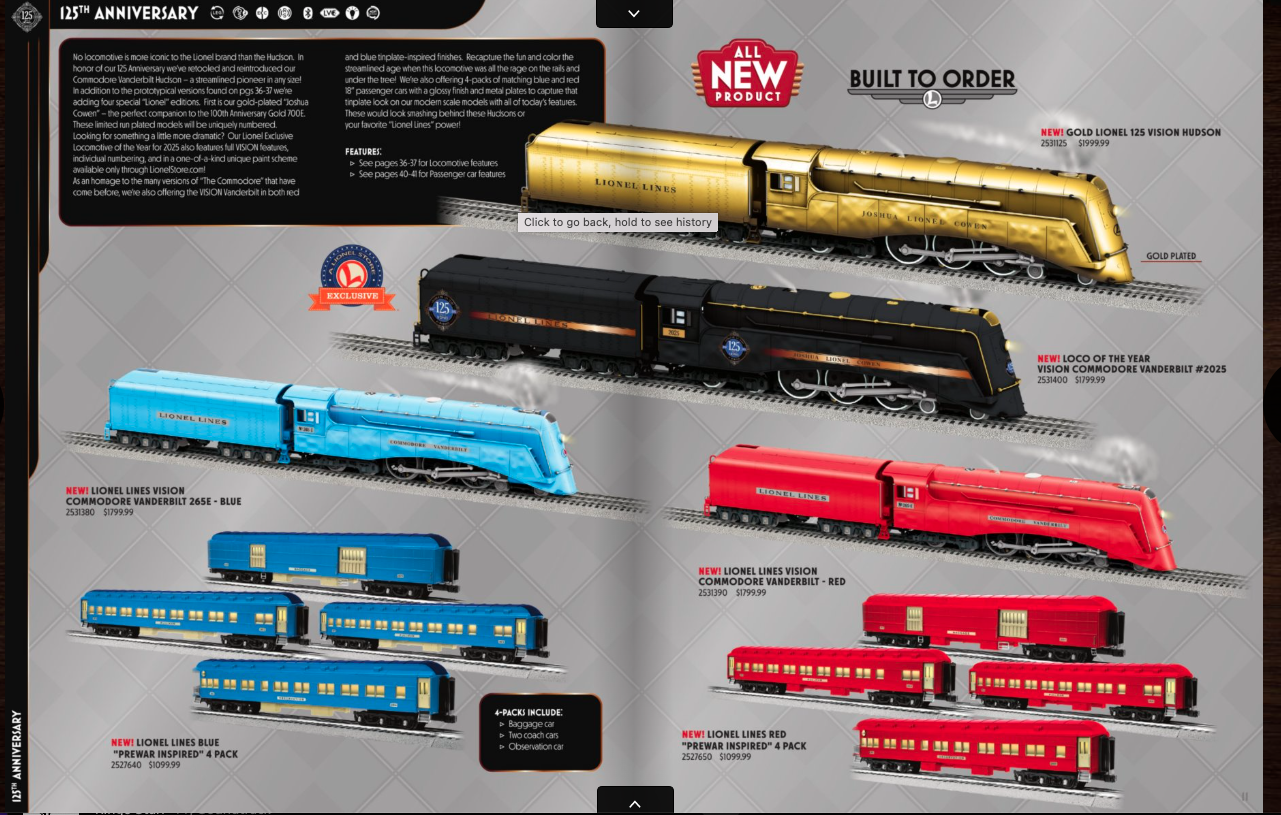
The railroads reported significant week-over-week overall intermodal volume increases as of July 18, with UP’s volume up 10% and BNSF’s up 8%, according to their weekly Association of American Railroads carload reports. The surge has come after the sharp downturn in intermodal traffic after the COVID-19 pandemic first hit.
BNSF — which handles far more intermodal traffic than UP in general and more parcel traffic in particular — appears to be more seriously affected by rapidly increasing volume.
“In the past several weeks, a sharp rise in volume, primarily driven by e-commerce business, created some imbalances in resource availability at key BNSF hubs, including our Los Angeles-Hobart Intermodal Facility,” BNSF said in a customer advisory on Monday. “In response, BNSF has been re-deploying a significant number of locomotives, railcars and personnel to affected locations, particularly in Southern California.”
BNSF also limited inbound trucking volumes to its Hobart terminal to ease congestion and has diverted some freight to its terminals in San Bernardino and Barstow, Calif.
“These actions, as they continue being implemented, are expected to provide the necessary capacity to meet demand levels,” BNSF says. “With similar adjustments made to meet increased freight demands at our Alliance Intermodal Facility in Fort Worth and facilities in the Chicago area, service performance has started to improve. The challenges of keeping pace with this volume surge, however, will require continued flexibility and collaboration.”
“As we have experienced a significant swing in demand, our rail providers have all worked strategically with us to solve our capacity challenges together,” Darren Field, president of J.B. Hunt’s intermodal division, told investors and analysts on the company’s earnings call earlier this month.
BNSF is Hunt’s rail partner in the west. In a service advisory last week, Hunt warned customers about intermodal constraints.
“A rapid increase in domestic and expedited intermodal volumes out of Southern California, along with challenges restoring labor availability to pre-COVID-19 levels, is resulting in severe ramp congestion at BNSF’s Los Angeles, and Commerce, Calif., facilities,” the Hunt advisory said. “The congestion is delaying inbound loads and empties, as well as outbound loads. BNSF is repositioning ramp personnel, onboarding new ramp employees, and adding third-party dray support as quickly as possible.”
In a service advisory today, Hunt said ingate restrictions at BNSF’s Los Angeles and Commerce ramps, combined with delays to inbound equipment, would “significantly reduce J.B. Hunt’s ability to pick up Southern California outbound shipments through Saturday, Aug. 1.”
Although the outlook is for an easing of the restrictions next week, Hunt does not expect volumes to hit pre-restriction levels before Aug. 9.
At Union Pacific, executives insist that their network is fluid in Southern California and elsewhere.
“Our operating team is balancing our resources to meet the increase in demand. We have stored locomotives and rail cars strategically placed and are adding them back into the network where we need them. In addition, we’re recalling crews from furlough to meet demand,” Kenny Rocker, UP’s executive vice president for marketing and sales, wrote in a message to customers on Monday.
On the railroad’s earnings call last week, UP Chief Operating Officer Jim Vena acknowledged a spike in intermodal demand in Southern California last month. In one week, volume surged 40%, but Vena said it’s not possible for a railroad to crank up capacity that quickly.
“There was no way I was going to flow trains one way and have all the deadheads and extra costs. We took it on a systematic basis, and we’re fluid now,” Vena said. “The railroad is running smooth. And we’re always going to have that a little bit of a lag. I mean that’s the way to railroad. Somebody else might have done it differently. I would not have changed anything I did when we started back up and the business came back.”
UP’s intermodal capacity in Los Angeles remains constrained, however.
Officials from intermodal marketing companies told the Journal of Commerce that only 20% of requests for railroad-owned containers that are part of the UMAX and EMP container pools are being accepted in Southern California, and that it’s difficult to get a gate reservation and a slot on an eastbound UP train.
“The indications are that volume has really spiked with heavy eastbound requirements, particularly for expedited e-commerce-related service. It has taken everyone, including me, by surprise because normally eastbound volume is driven by import TEUs,” says intermodal analyst Larry Gross, referring to twenty-foot equivalent units, the standard measure of international containers.
But international intermodal volume is down. Much of the increased freight is coming from inventory warehoused in the Los Angeles area that suddenly wants to move to retail distribution centers across the country, Gross surmises.
Todd Tranausky, rail and intermodal analyst with freight forecasting firm FTR Transportation Intelligence, says railroads have never been able to quickly adjust their operations to match rapid surges in demand.
“If railroads are going to move resources permanently into a region, they have to be confident in the traffic surge and with all the uncertainty around the U.S. economy and freight volumes, it is hard to have that confidence,” Tranausky says. “On the other hand, maintaining service levels are key to railroads being able to grow market share and obtain higher rates so carriers are in a really tough spot with how to respond.”













